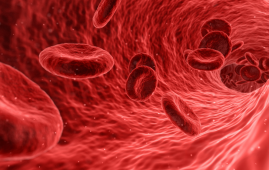

Radiopharmaceuticals based on cerium/lanthanum-134 show potential for prostate cancer imaging and therapy. Actinium-targeted alpha radiation is a promising treatment option for metastatic malignancies such as prostate cancer. This method necessitates doctors obtaining photographs of the radiation agent as it goes to tumors, a technique known as molecular imaging. Radiolabeling is the process of attaching a radioisotope to a chemical molecule. Using a radiolabeled chemical in a molecular imaging investigation allows clinicians to design therapies.
This imaging phase, however, is not practicable for medicinal compounds labeled with actinium-225 (Ac-225). A desired imaging isotope must have a half-life and chemistry similar to Ac-225, as well as a decay emission that allows for imaging; few such isotopes exist. Cerium/lanthanum-134 has been proposed as an imaging material for Ac-225 by researchers. The performance of cerium-134 (Ce-134) as an imaging surrogate in combination with Ac-225 was investigated in this study.
To ensure the efficacy of cancer therapies, clinicians must use imaging to guide their therapy decisions. Ac-225 therapy has shown considerable potential in the treatment of prostate and other malignancies. This study used Ac-225 and Ce-134 to create a single molecular platform for imaging and treatment, making this radioisotope more usable. The results show that Ce-134 and Ac-225 have similar tumor uptake in prostate cancer models. This suggests that imaging with Ce-134-labeled radiopharmaceuticals has the ability to guide Ac-225-labeled treatment agents’ therapeutic dose.
Theranostics is a new field that combines imaging and therapy to provide a more tailored approach to treating cancer and other disorders. Theranostics in nuclear medicine have been demonstrated to be extremely effective in the treatment of specific types of cancer, including neuroendocrine tumors and prostate cancer.
Actinium-225 (half-life = 9.9 days)-based targeted alpha treatments have been found in studies to be successful in treating metastatic castration-resistant prostate malignancies, greatly enhancing patient survival and disease remission. Unfortunately, due to the scarcity of imaging isotopes with identical half-lives and chemistry to actinium-225, localisation and precise dose estimate are difficult. To circumvent these issues, researchers have produced a cerium/lanthanum-134 combination as an imaging surrogate.
Researchers from the University of California, San Francisco, and the University of Virginia established a robust cerium-134 radiolabeling technology employing the chelators Macropa and DOTA in this work published in the Journal of Nuclear Medicine. They also used the optimized approach to target prostate cancer with PSMA-617 and antibody YS5.
The distribution of cerium/lanthanum-134 Macropa-PEG4-YS5 in most tissues and malignancies was identical, with the exception of the liver and spleen. According to the researchers, this is the first report of a complete analysis comparing the chemistry and localisation of Ce-134 and Ac-225, beginning with chelators and progressing to tumor-targeting drugs. These findings support the development of Ce-134 radiopharmaceuticals as a companion to alpha particle radiotherapeutics for cancer imaging. The Department of Energy Isotope Program provides Ac-225 and Ce-134.
more recommended stories
 Fat-Regulating Enzyme Offers New Target for Obesity
Fat-Regulating Enzyme Offers New Target for ObesityKey Highlights (Quick Summary) Researchers identified.
 Spatial Computing Explains How Brain Organizes Cognition
Spatial Computing Explains How Brain Organizes CognitionKey Takeaways (Quick Summary) MIT researchers.
 Gestational Diabetes Risk Identified by Blood Metabolites
Gestational Diabetes Risk Identified by Blood MetabolitesKey Takeaways (Quick Summary for Clinicians).
 Phage Therapy Study Reveals RNA-Based Infection Control
Phage Therapy Study Reveals RNA-Based Infection ControlKey Takeaways (Quick Summary) Researchers uncovered.
 Pelvic Floor Disorders: Treatable Yet Often Ignored
Pelvic Floor Disorders: Treatable Yet Often IgnoredKey Takeaways (Quick Summary) Pelvic floor.
 Urine-Based microRNA Aging Clock Predicts Biological Age
Urine-Based microRNA Aging Clock Predicts Biological AgeKey Takeaways (Quick Summary) Researchers developed.
 Circadian Control of Neutrophils in Myocardial Infarction
Circadian Control of Neutrophils in Myocardial InfarctionKey Takeaways for HCPs Neutrophil activity.
 E-Cigarette Use and Heart Attack Risk in Former Smokers
E-Cigarette Use and Heart Attack Risk in Former SmokersKey Takeaways for Clinicians and Nurses.
 36-Week Pre-eclampsia Screening May Reduce Term Risk
36-Week Pre-eclampsia Screening May Reduce Term RiskA New Preventive Strategy for Term.
 Cardiovascular Risk and Sudden Cardiac Death in Diabetes
Cardiovascular Risk and Sudden Cardiac Death in DiabetesRising Sudden Cardiac Death (SCD) Risk.

Leave a Comment